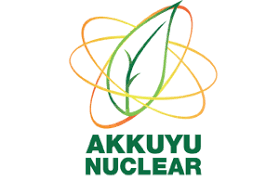There have been no reports of damage to the Akkuyu nuclear power plant after two big earthquakes struck Turkey. The project teams says that after safety checks, construction is continuing.
Anastasia Zoteeva is the CEO of JSC Akkuyu Nuclear. She said last Monday, “Aftershocks of about 3.0 magnitude were felt here at the Akkuyu NPP site, but our specialists did not detect any damage to building structures, cranes, equipment, Nevertheless, we are carrying out extensive diagnostic measures to make sure that construction and installation operations can continue safely.”
Later on Monday, Russia’s Tass news agency reported an update issued by a spokesperson for Akkuyu Nuclear. The update said, “specialists conducted a prompt, operational inspection of all buildings, structures, tower cranes, scaffolding and other structures under construction for deviations and damage. No damage was found as a result of the inspection. Construction and installation work continues.”
The International Atomic Energy Agency tweeted on Monday afternoon about the situation. The tweet read, “As of now, no impact from earthquakes on nuclear safety & security in Türkiye, its Nuclear Regulatory Authority told IAEA.” The tweet continued, adding that there were “no issues so far related to radiological safety & security of radioactive sources, & the country’s under construction nuclear power plant is unaffected”.
The seven-point eight magnitude earthquake struck near the city of Gaziantep around 4:30 local time. It was the biggest earthquake to hit the country in eighty years. As of Monday at 16:00 GMT there were about two thousand three hundred deaths confirmed in Turkey and Syria. Many more were injured or are still missing. The Akkuyu nuclear power plant is being built in the southern Mersin province about two hundred sixty-seven to the west of the epicenter of the quake.
The Akkuyu plant is the first nuclear power plant constructed in Turkey. The Russian state-owned Rosatom is building four VVER-1200 reactors. The contract is a build-own-operate (BOO) type. Construction of the first unit began in 2018. It is scheduled to go operational in 2023. The four thousand eight-hundred megawatt plant is intended to meet about ten percent of Turkey’s electricity needs.
Nuclear reactors are designed to be able to survive natural hazards such as earthquakes. The Akkuyu plant has been designed with additional earthquake protection measures. These measures include the reactor building foundation slab being designed to be “highly earthquake-resistant”. Tass reported that the Akkuyu “project is designed to withstand a maximum earthquake of up to 9 on the Richter Scale”.
The World Nuclear Association’s information paper on Nuclear Power Plants and Earthquakes said, “Reactors of both western and Soviet design have been subjected to major seismic activity in North America and Europe without damage. California’s power reactors, San Onofre 2 and 3 and Diablo Canyon 1 and 2, continued to operate normally during the 6.6 magnitude earthquake in January 1994. San Onofre, the closer station, was about 112 km from the epicenter. In December 1988, a magnitude 6.9 earthquake, resulting in the deaths of at least 25,000 people, occurred in northwestern Armenia. It was felt at the two-unit Armenian nuclear power station located approximately 75 km south of the epicenter, but both Soviet-designed PWRs operated normally, and no damage was reported. This was the first Russian nuclear power plant specifically adapted for seismic areas, and it started operating in 1976.”
The report also said, “In April 2013 a magnitude 7.7 earthquake in Iran caused no damage [to the Bushehr plant] according to Iran’s report to IAEA, though some cracking of concrete was later reported. The plant is designed to withstand magnitude 8 quakes.”
Blog
-

Nuclear Reactor 1129 – The Akkuyu Nuclear Power Plant Construction Project Was Not Harmed By The Recent 7.6 Earthquake in Turkey
-
Nuclear News Roundup Feb 10, 2023
Ukraine greenlights first steps on new nuclear reactor builds bellona.org
Partnership for UK fusion materials development world-nuclear-news.org
Four nations call on Iran to comply with its obligations world-nuclear-news.org
Community Leaders Urge Government To Back Plans For Ohma Nuclear Plant nucnet.org
-

Geiger Readings for Feb 10, 2023
Ambient office = 56 nanosieverts per hour
Ambient outside = 106 nanosieverts per hour
Soil exposed to rain water = 115 nanosieverts per hour
Grape from Central Market = 84 nanosieverts per hour
Tap water = 91 nanosieverts per hour
Filter water = 83 nanosieverts per hour
-

The University of Florida Will Lead A New Project On Nuclear Forensics
The University of Florida (U of F) will head a new twenty five million dollars, sixteen university team of thirty one scientists and engineers. This team will work to develop new techniques and the training of future specialists in nuclear forensics. This discipline identifies and tracks of nuclear materials to support global safety.
This project is funded by the U.S. Department of Energy’s National Nuclear Security Administration (NNSA). It aims to prepare one hundred and thirty five undergraduate, master’s and doctoral students to help federal laboratories across the U.S. address current and future needs of nuclear forensics. In addition, they will work to help replace an aging workforce.
Professor Jim Baciak is the project leader and a professor in the Nuclear Engineering Program in U of F’s Department of Materials Science and Engineering. He said, “I am honored that our team was entrusted by the NNSA to develop the next generation of leaders for the Department of Energy national laboratories. Our team represents a diverse array of technical areas that are required for robust nuclear forensics, including analytical chemistry, radiochemistry, environmental sciences, geochemistry, nuclear engineering, physics, statistical analyses, machine learning and optical sciences.”
University of Florida materials science and engineering department will contribute Assel Aitkaliyeva, Kyle Hartig, Juan Nino and Nathalie Wall to Baciak’s new team. Ryan Houim from the U of F mechanical and aerospace engineering will also join the team.
Forrest Masters is the interim dean of UF’s Herbert Wertheim College of Engineering. “The consortium is a great recognition for our nuclear engineering program, our college and the university. This award represents a valuable opportunity to demonstrate our strong commitment to supporting research and workforce development oriented toward advancing national security.”
The researchers and the students in the new team will focus on five technical areas.
Professor Brian Powell of Clemson University will lead Rapid Turnaround Forensics to shorten chemical analysis techniques to twenty-four hours or less.
Associate Professor Assel Aitkaliyeva of U of F will lead Advanced Analytical Methods to develop improved materials characterization and microscopy techniques.
Associate Professor Nicole Martinez of Clemson will lead Ultrasensitive Measurements which will investigate methods in environmental sampling and instrumentation to look at low-level signals.
Assistant Professor Amanda Johnsen of Penn State University will lead Signature Discovery to determine if new signals and measurements can lead to improved accuracy in determining material quantities.
Assistant Professor Kyle Hartig of U of F will lead Prompt Effects and Measurements to understand signals given off following a nuclear detonation.
Deputy Director and Associate Professor Camille Palmer of Oregon State University will assist in leadership of the consortium. The consortium will collaborate on research with staff scientists and engineers from seven DoE national laboratories. Each will bring their own unique expertise. The national laboratories included in the project are Lawrence Berkeley National Laboratory, Lawrence Livermore National Laboratory, Los Alamos National Laboratory, Oak Ridge National Laboratory, Pacific Northwest National Laboratory, Sandia National Laboratory and Savannah River National Laboratory (SRNL).
Other universities in the consortium will include University of California – Berkeley, University of Central Florida, City University of New York, Clemson, George Washington University, Iowa State University, University of Michigan, University of Nevada – Las Vegas, North Carolina State University, University of Notre Dame, Oregon State University, Penn State, South Carolina State University, University of Tennessee, and Texas A&M University. -
Nuclear News Roundup Feb 09, 2023
Darlington ready to produce medical radioisotope world-nuclear-news.org
Austin Notes Progress on Development of Australia’s Nuclear-Powered Sub defense.gov
NATO Urges Russia to Comply With Last US Nuclear Treaty voanews.com
European Parliament calls for Russia sanctions to include nuclear world-nuclear-news.org
-

Geiger Readings for Feb 09, 2023
Ambient office = 74 nanosieverts per hour
Ambient outside = 97 nanosieverts per hour
Soil exposed to rain water = 90 nanosieverts per hour
Kalura lettuce from Central Market = 88 nanosieverts per hour
Tap water = 76 nanosieverts per hour
Filter water = 60 nanosieverts per hour
-

Nuclear Weapons 810 – Five Island Nations Might Be Able To Grow Sufficient Food During A Nuclear Winter Following A Nuclear War
Nuclear famine is a hypothesized famine considered a potential threat following global or regional detonations or nuclear weapons. It is thought that even subtle cooling effects resulting from a regional nuclear exchange could have a significant impact on agriculture production, triggering a food crisis amongst the world’s survivors. the primary mechanism for human fatalities would likely not be from nuclear blast effects, nor from thermal radiation burns, and not from ionizing radiation, but, rather, from mass starvation.
Many processes could be involved leading up to a massive food shortage on a global scale. Crops, stored food and agricultural supplies such as fertilizers and pesticides could be instantly destroyed in nuclear blasts; nuclear contamination of soil, air and water could render food unsafe to eat, and crops unable to grow properly; and uncontrollable fires could impede normal agricultural or food gathering activities.
A new study found that five island nations could produce enough food in spite of reduced sunlight and cooler temperatures caused by soot in the atmosphere following a nuclear war in the Northern Hemisphere.
Professor Nick Wilson from the University of Otago, Wellington and independent researcher Doctor Matt Boyd from Adapt Research carried out the research for the new study. The study concluded that New Zealand, Australia, Iceland, Vanuatu and the Solomon Islands were likely to have robust food self-sufficiency, even in an extreme nuclear winter.
Dr. Boyd said that other countries might be able to produce enough food, However, other factors such as the collapse of industries and social functioning placed their resilience in doubt.
Professor Wilson added that their findings are consistent with a 1980s study on the impact of nuclear war on New Zealand. However, the resilience of the country has declined since then as its dependence on imported diesel and digital infrastructure has grown.
Wilson said, “Islands such as New Zealand are often very dependent on imports of refined liquid fuel, may lack energy self-sufficiency and are susceptible to breakdowns and shortages of critical commodities. While New Zealand could divert a high proportion of its dairy exports to supply the local market, it lacks the ability to manufacture many replacement parts for farm and food processing machinery.”
Boyd said that the report also highlighted the precarious position many countries could find themselves in during a global catastrophe. He added that “New Zealand has the potential to preserve an industrial society through this kind of catastrophe, but it is not ‘plug-and-play. A decent amount of strategic planning needs to happen and across a long period of time, but this planning would have benefits in dealing with a wide range of extreme risks.” He noted that their report also indicates that there is a need to analyze nuclear winter and other abrupt sunlight-reducing scenarios as part of a comprehensive nation risk assessment.
Boyd went on to say that “We are not aware of any plan for this kind of global catastrophe, including whether priorities for rationing have been considered. With the Government expected to release New Zealand’s first National Security Strategy this year, it is important the catastrophic risks associated with abrupt sunlight-reducing scenarios do not slip through the cracks.” -

Geiger Readings for Feb 08, 2023
Ambient office = 95 nanosieverts per hour
Ambient outside = 114 nanosieverts per hour
Soil exposed to rain water = 114 nanosieverts per hour
English cucumber from Central Market = 63 nanosieverts per hour
Tap water = 96 nanosieverts per hour
Filter water = 87 nanosieverts per hour
-

Nuclear Reactors 1128 – Pink hydrogen Generated With Nuclear Power Is Attracting Interest – Part 2 of 2 Parts
Part 2 of 2 Parts (Please read Part 1 first)
Pink hydrogen already has some possible significant backers. These include EDF Energy which has suggested the possible production of pink hydrogen at Sizewell C, a three gigawatt nuclear power station being planned for the U.K. The EDF website says, “At Sizewell C, we are exploring how we can produce and use hydrogen in several ways. Firstly, it could help lower emissions during construction of the power station. Secondly, once Sizewell C is operational, we hope to use some of the heat it generates (alongside electricity) to make hydrogen more efficiently. Hydrogen produced from nuclear power can play a substantial role in the energy transition.” EDF is part of the multinational EDF group.
EDF admits that there were challenges facing the sector and its development. It said, “Hydrogen is currently a relatively expensive fuel and so the key challenge for low carbon electrolytic hydrogen, whether produced from renewable or nuclear energy, is to bring down the costs of production. This needed supportive policies which encourage investment in early hydrogen production projects and encourage users to switch from fossil fuels to low carbon hydrogen. Growing the market for low carbon hydrogen will deliver the economies of scale and ‘learning by doing’ which will help to reduce the costs of production.”
There is excitement about the possible role nuclear could play in hydrogen production and the wider energy transition. The IEA says that nuclear power has “significant potential to contribute to power sector decarbonization”. However, it goes without saying that it is not favored by all.
Critics of pink hydrogen include Greenpeace. The environmental organization says, “Nuclear power is touted as a solution to our energy problems, but in reality it’s complex and hugely expensive to build. It also creates huge amounts of hazardous waste.”
Rothman has spoken about the bigger picture and the role different types of hydrogen production might play. Could there ever be a time when the level of blue and grey hydrogen drops to zero?
Rothman said, “It depends how long a timeframe you’re looking at. In an ideal world, they will eventually drop very low. Ultimately, we ideally get rid of all of our grey hydrogen, because grey hydrogen has a large carbon footprint and we need to get rid of it. As we improve carbon capture and storage, there may be a space for blue hydrogen and that’s yet to be evaluated, depending on the … developments there. The pink and green we know there has to be a space for because that’s where you really get the low carbon [hydrogen], and we know it should be, it’s possible to get there.”
Fiona Rayment is the chief scientist at the U.K. National Nuclear Laboratory. It is a member of the trade association Hydrogen U.K. EDF is also a member. Rayment stressed that it will be important to have a range of options available for hydrogen generation in the years ahead. She added that “The challenge of net zero cannot be underestimated; we will need to embrace all sources of low carbon hydrogen generation to replace our reliance on fossil fuels.”
